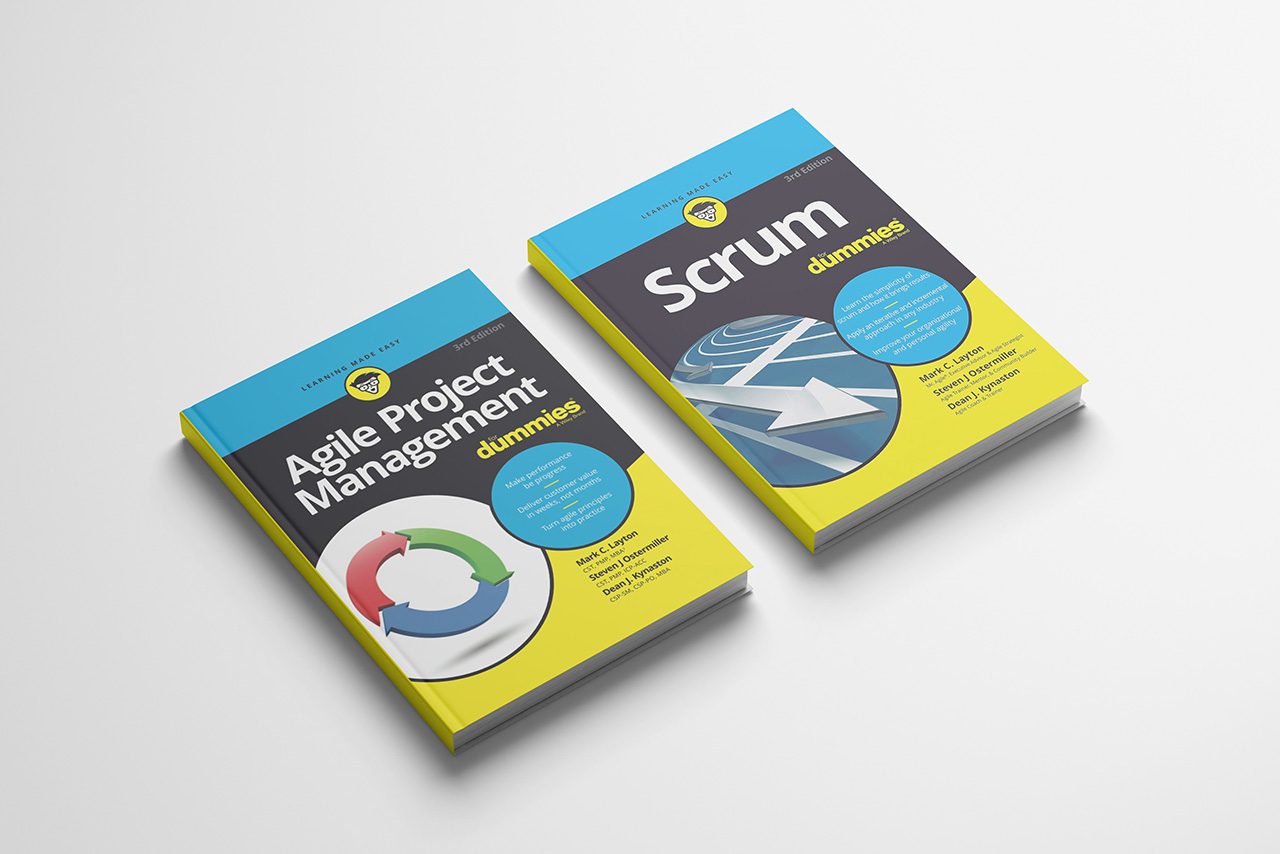by Steve Ostermiller (Ed.)
Now that you’ve accomplished scrum certification, where will this new knowledge and mindset take you? Scrum practices can provide you a framework for managing personal and professional projects. In this post, we’re sharing some practical ways to use scrum.
The scrum framework: a guide for projects in work and life
In considering the practical ways to use scrum, it’s essential to talk about the framework and its correlation to projects. The framework includes three roles, three artifacts, and five events.
The scrum team includes a product owner, the development team, and a scrum master. It is self-organizing and cross-functional. This team makeup drives flexibility, productivity, and creativity.
The scrum artifacts are the product backlog, sprint backlog, and product increment. These artifacts represent the work of the team. Each of them enables transparency so that all parties have a clear understanding.
The framework prescribes the scrum events to ensure regularity in inspection and adaptation. Here’s a brief review of those events.
Sprint
A sprint is the scrum concept for iteration. It is a timebox for completing the work needed to accomplish a goal. It contains all the other scrum events listed below. Sprints are typically two-weeks or shorter. Sprints focus on meeting specific goals. Goals consist of the tasks to accomplish and the plan to deliver the finished product.
Sprint planning
At the beginning of every new sprint is a planning session. The purpose is to establish a business goal. Then work out a plan to achieve that goal, including how to approach the work.
Daily scrum
Daily scrums are 15-minute sessions for the development team to sync up and adjust their plan for the day ahead. It occurs at the same time every day during the sprint. Its purpose is to facilitate collaboration and coordinate what needs to happen next.
Sprint review
A sprint review occurs at the end of the sprint. This event is a time to inspect the potentially releasable product increment created during the sprint and adapt the product backlog. The scrum team and stakeholders collaborate in the review of the findings and determine how to optimize value. Then the team gathers feedback for potential improvements in future sprints. The sprint review is for inspecting and adapting the product.
Sprint retrospective
When a sprint ends, it’s time for reflection. The sprint retrospective includes an evaluation of the sprint, looking at what went right and wrong. From this, you can draw insights for improvement. The sprint retrospective is for inspecting and adapting the process.
So, how can you use these components for practical scrum purposes?
Let’s look at a few examples that highlight real-world scenarios.
Using scrum for personal productivity
Using scrum in professional settings doesn’t apply only to work for development projects. You can use the framework to improve your productivity.
Applying scrum to this example may look like this:
- Define your backlog: List the tasks or activities you need to complete and prioritize them.
- Focus on one thing at a time per sprint.
- Post-sprinting: Once you get to a done on your specific project, reflect on what stood in the way of getting things done. Do you need new tools? Help from others? Are there too many distractions? Recap the experience with lessons learned. Then plan ways to implement those learnings in the future.
Scrum applications for projects
Some of the most practical applications of scrum come from everyday life. Here are some ideas to consider.
Home improvement projects

It’s a great tool for home improvement projects. It could help you move forward with things that are currently sitting in DIY project purgatory. Applying the framework could look like this:
- Create your backlog: Define each step of the process and the material and tool needs.
- Set your timeframe: How much time will each step take? If you aren’t sure, do some research, including any lead times for materials.
- Decide a sprint length, and break your work into small efforts that fit in the sprint length. Do you want to break the work to be done into weeklong increments, several days, single days, several hours, etc.?
- Start your first sprint based on the steps that need to happen first (i.e., acquiring materials, prepping areas, etc.)
- Complete your first reflection: Were you able to complete the items in the first sprint? What went wrong? What went well?
- Begin sprint two: Now that you have the first steps complete, what is the next most important thing to work on to get closer to your goal?
You will need to keep repeating sprints and reflections, depending on how complex the project is. Although painting a room is much simpler than a complete bathroom remodel, both projects can benefit from inspection and adaptation along the way.
Will using scrum make you happier?
Bruce Feiler presented a TED Talk years ago that proposed this possibility. Bruce noted in the talk that today’s families are “out of control.” In this description, he was looking at the dynamics of the modern family with busy schedules and lots of demands on time.
He tells the story of the Starr family. They were seeking structure for the chaos. The kids in the family really wanted their parents to be less tired and stressed.
To achieve this goal, the family has standup meetings each morning with checklists. The checklist removed frustration from the equation. The family empowered their children to provide feedback and input. They used this for the next iteration. Scrum was a tool to reduce stress and foster an inclusive environment.
Scrum-based event planning
Scrum seems like an ideal fit for event planning. You can even “scrum” a wedding. Here’s how to plan a wedding with scrum.
- Set a vision: Define your must-haves for the wedding and the experience you want to create.
- Create a schedule: Choose a date and determine your budget.
- Establish and prioritize wedding requirements, such as venue, invitations, the cake, etc. and develop them into a roadmap.
- Formulate release goals: Determine the major milestones for the event (i.e., venue reserved, invitations sent, decorations ordered, etc.).
- Organize your first sprint: Address the highest priority backlog items, breaking them down into tasks.
- Execute sprints: Begin the sprint and reprioritize as you have new or changing requirements.
- Use a sprint review: Inspect and adapt around priorities and product backlog items to make new decisions moving forward.
What makes scrum great for event planning is that it’s flexible. Something will undoubtedly go wrong, so it’s much easier to change.
You can find more scrum for everyday life examples in Scrum For Dummies, available to order here.
Scrum is more than a certification
Achieving your scrum certification is a great achievement. Our certification experiences teach you scrum by doing scrum, just as you would in the real world.
If you’re interested in learning more about scrum applications for your life or organization, view our latest class schedule for certification information.







